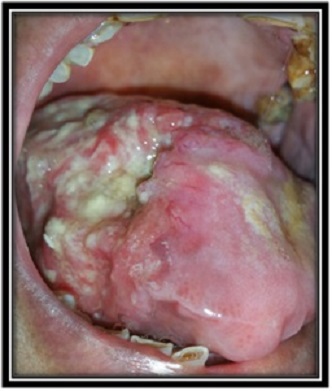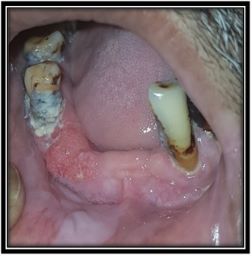Oral Cancer Overview
What are the types of oral cancer?
Histologically oral cancer can be of many types. The most common histologic diagnosis is squamous cell carcinoma (SCC), which represents more than 90% of cases. Anatomically, on the basis of site of origin the oral cancer can be divided into the following subsites: oral tongue, floor of mouth, lower gum, upper gum, buccal mucosa, hard palate, and retromolar trigone. These subsites tend to have relatively unique lymphatic drainage pathways and require varied surgical and reconstructive approaches.
Buccal Mucosa Cancer
Tongue Cancer
Lip Cancer
Cancer of Lower Alveolus (Lower Jaw)
How Is Oral Cancer Diagnosed?
As part of your routine exam, your doctor (Dentist /ENT /Oncologist) will conduct an oral cancer screening exam. More specifically, your doctor will feel for any lumps or irregular tissue changes in your neck, head, face, and oral cavity. When examining your mouth, the doctor will look for any sores or discoloured tissue as well as check for any signs and symptoms mentioned above.
A biopsy may be needed to determine the makeup of a suspicious looking area. There are different types of biopsies and your doctor can determine which one is best. Many doctors don’t use brush biopsies because while they're very easy they may not always be accurate and almost always they still need a scalpel (incisional /punch) biopsy to confirm the results if the brush biopsy is positive. Also, there are different types of scalpel biopsies, incisional and excisional, depending whether only a piece or the whole area is needed to determine what the nature of the problem is.
How Is Oral Cancer Treated?
Oral cancer is treated the same way many other cancers are treated.
The treatment you receive depends on multiple factors – clinical findings of your tumour (size, histology, stage, lymph nodes, metastases etc) and your own overall health to be able to tolerate the treatment. Another important factor is availability and access to expert cancer care. The goals of treatment are very important. You should discuss frankly and openly with your doctor regarding your expectations. Talk with your doctor about your treatment choices, the goals of treatment, and what are the risks and possible side effects of the treatment.
There are three important modalities for treatment of cancer, namely – Surgery, Radiotherapy and Chemotherapy. Typically, early stage oral cancers (stage I &II ) are treated with surgery and may not need any more treatment. Advanced stage III and IV cancer will always need Surgery followed by radiotherapy. Chemotherapy may be needed in treatment of some of these stages III and IV cancers based on specific findings in the final pathology report. Immunotherapy and targeted therapy are two new modalities of treatment for patients with advanced cancers and many times recurrent cancers.
What Can I Do to Prevent Oral Cancer?
There is no sure way to prevent all mouth and throat cancers. But you can control some risk factors to help reduce your risk. To prevent oral cancer:
What Is the Prognosis for People with Oral Cancer?
The overall 5-year survival rate for patients with an early diagnosis (stage 1 & 2) of oral cavity cancers is very good (80 to more than 90 %) .If the cancer has spread to nearby tissues, organs, or lymph nodes,(Stages 3 & 4) the 5-year survival rate drops significantly ( about 30 to 40 %).It is therefore very important for people to be aware of signs and symptoms of oral cancer so that they can be diagnosed very early. Early diagnosis is the key to good survival in oral cancer patients. Also important is to be treated quickly after the diagnosis. Delay in starting the treatment as well as delays during the treatment (poor healing, complications, radiotherapy delay etc) have been proven to have adverse outcome in terms of survival.
In patients already treated for oral cancer, can new oral cancer be prevented?
There is no fool proof way of preventing oral cancer. But you can take an active role in detecting oral cancer early, should it occur, by doing the following things:











